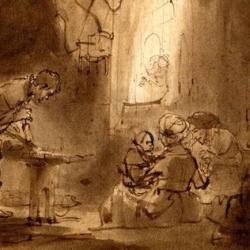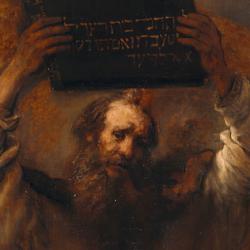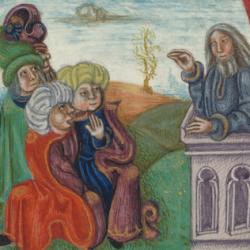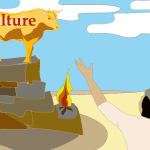Deuteronomy and Exodus contradict one another regarding the visibility of God, says Margaret Barker in Temple Mysticism (p. 2). Moses reminds the Israelites, “you heard the sound of words but saw no form” (Deuteronomy 4:12). Exodus 24:10, though, says that Moses and the elders “saw the God of Israel” while eating and drinking on Sinai.
It’s not a contradiction, first because the two passages refer to different groups (Israel as a whole v. Moses and other leaders) and second because of the word “form” ( temunah ). Israel as a whole saw something on Sinai, but they saw no form. It’s possible that Moses and the elders, though they were closer, still saw no form .
But the distinction between the two statements is worth pondering. Whatever Moses and the elders saw, David hopes to see Yahweh’s temunah (Psalm 17:15), Ezekiel actually sees the likeness of a man in the midst of God’s glory (Ezekiel 8:2). Then of course we move to the New Testament and the Father makes Himself visible in Jesus, so that we see His glory.
This is the trajectory used in defense of icon veneration. I don’t think that it supports that conclusion, but it does seem that the trajectory is there. Visibility is for David an eschatological hope that is realized in Jesus and in the new covenant. Instead of seeing that fulfilled in icons, though, I think we need to see if fulfilled in the church, the community of living icons who are joined to the eternal Icon of the Father.














